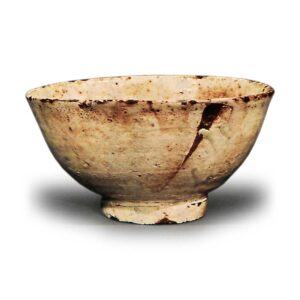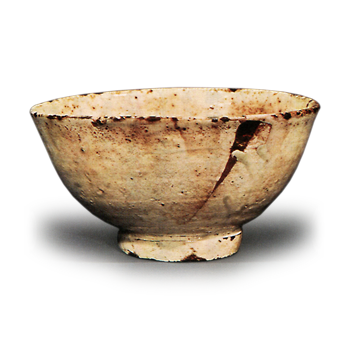
A type of Koryo ware. Also called kobuki. It is so named because the white glaze looks as if it has been powdered or blown. Although there is no evidence to date of its place of origin, it is thought to have come from Gyeongsangnam-do Province, based on other similar works. The “Meri-so” describes it as “a type of Kohikigami Mishima Hakeme, the oldest and most ancient type of tea utensil. There are two types of tea utensils, one called kohiki, which is a little thinner in execution, and the medicine is blue and white inside and outside, and it is beautiful.
The one called kohiki has a slightly lighter workmanship, with a beautiful blueish color and white inside and out. The one called kohfuki has no base color, but only a muddy, soaked pattern, and is of inferior workmanship. Although it is not impossible to distinguish between the two, there is almost no need to do so. The “Manpo-zen-sho” (The Complete Collection of Ten Thousand Treasures) says, “This is a good piece. The most famous tea bowls of this type are Matsudaira Fumai’s kobiki, owned by Hinoya Mataemon; Nomura Tokushichi’s kobiki, owned by a man from Takamatsu in Sanuki Province (Kagawa Prefecture); kobuki from the Marquis Asano’s estate; Miyoshi kobuki, owned by Miyoshi Nagayoshi of the Mitsui family; and Ueno Seiichi’s inscription Zanzetsu. (Taisho Meikikan, Tea Ceremony Meimono Kou)



